August 2009

Marquesas Archipelago: Ancient Polynesia
August 2009

Fatu Hiva Island

Landfall in the Marquesas at Hanavave Bay (Bay of Virgins), Fatu Hiva
The people who came to be known as Polynesians left Indonesia over two thousand years ago. The islands of the South Pacific were populated in wave after wave of subsequent migrations. By the time we reached the towering phallic spires of Fatu Hiva, its black volcanic cliffs had been described in countless guidebooks. The island is often referred to as "foreboding". Other than a dark cloud continually parked over the peaks, we didn't notice anything sinister in the air.
We waited out a downpour under an overhanging cliff, and then met Philippe, who took us to his house and loaded us up with pamplemousse, limes, green oranges, and a stalk of bananas. We took him back to the boat and gave him candies and balloons for his two grandchildren, fish hooks, fishing line, rope, and perfumed soap and lotion for his wife. His first requests were for 60 meters(!) of line, rum, and perfume. It's good to dream. Another popular request is for 22-caliber bullets for hunting pigs. Philippe laughs easily and radiates the same relaxed zest for life we've remarked in many Polynesians. One old character pointed his gun at us (hunting wild pigs is a popular pastime here) and laughed maniacally, while his friend picked his teeth and made references to cannibalistic activities (the last recorded incidence of cannibalism in the Marquesas was in the 1950's). Could this be the local version of Deerhunter?
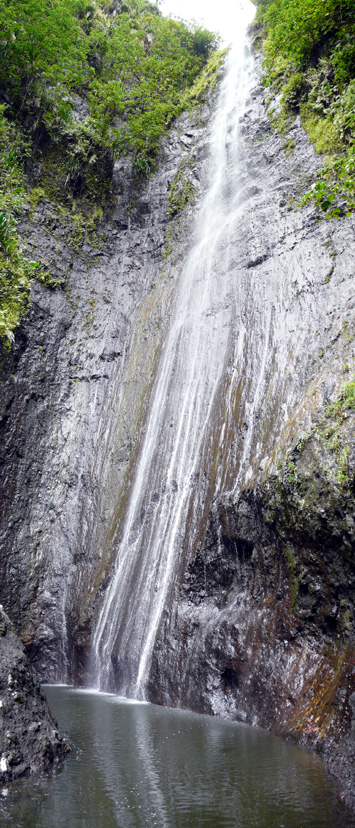
The wet weather had the waterfalls working well |
|
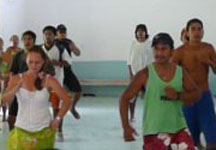
|
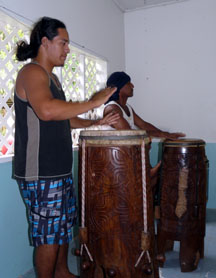
|
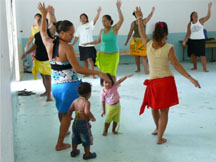
|
| Click on the photo to see Marquesans getting their groove on at an afternoon dance practice. | Click to hear the booming sounds of this big carved drum, or pahu. | Click to see the kids joining in. |
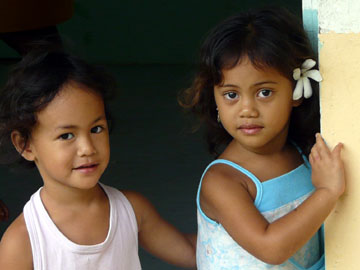
|
The Marquesan people seem to always be smiling, and friendly--maybe that's why they're so attractive. These two kids are perfect examples. |

Hiva Oa Island
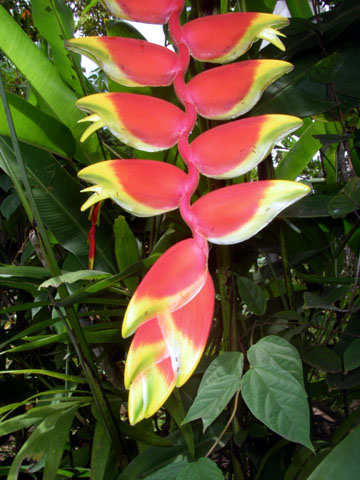
|
As in the Tuamotus, nobody here seems to know or care what time it is. The roosters crow, scratch, and gang up on the hens, the pigs grunt, and the goats bleat. Who has an appointment to keep? This relaxed attitude sometimes extends to money. When a gas station couldn't get through to get approval for our credit card, they let us have $100 of gas anyway (we paid the next day). When we wanted to get to the other side of an island, a city hall employee said, "You'd like to get a ride to Motupo? Ask the mayor!"
Odd conversations occur about time: "We'll be back tomorrow at 8am. Are you on Marquesan time?" "Yes" "But your clock shows Tahitian time." Long pause, staring at the clock. "Oh yes, it's broken!" |
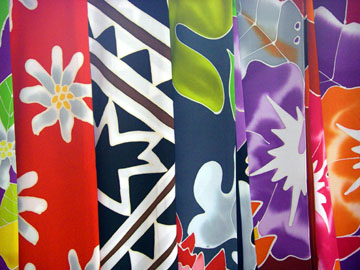
Colorful pareos |
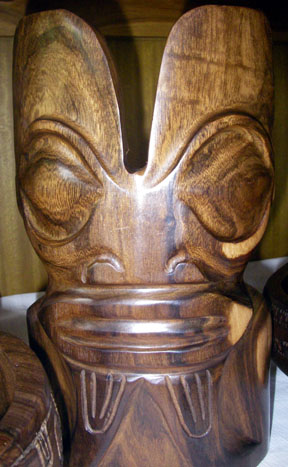
Carved wood tiki |
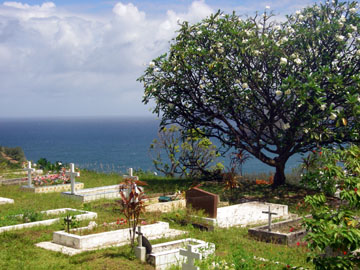
|
The hilltop cemetary in Atuona seems like a good spot to spend eternity . . . |
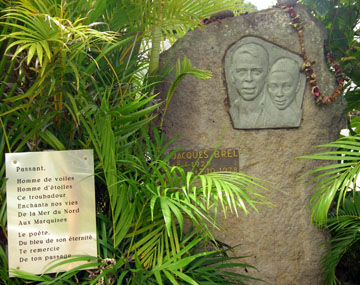
Grave of Belgian troubadour Jacques Brel |
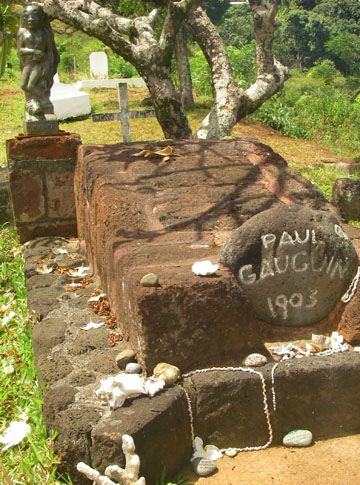
Final resting place of the talented artist Paul Gauguin, who was friendly with local 13-year-old girls |
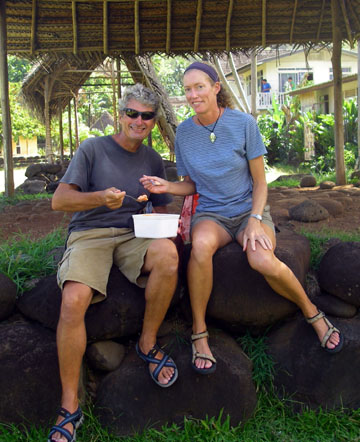
|
Sanctified ice cream: Consuming a $14 half-gallon of chocolate atop a stone temple marae |

Tahuata Island (Tahu = fire; ata = spirit)
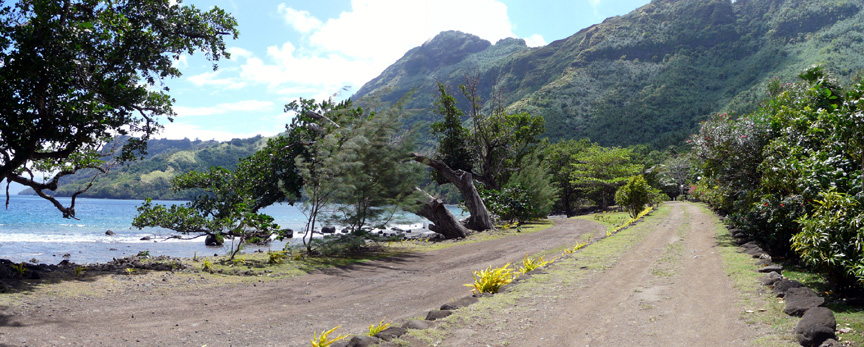
|
| Built by a king in ancient times, this pathway in Hapatoni sits atop a 12-foot high stone wall. Hapatoni is known for fine wood and bone carving. |
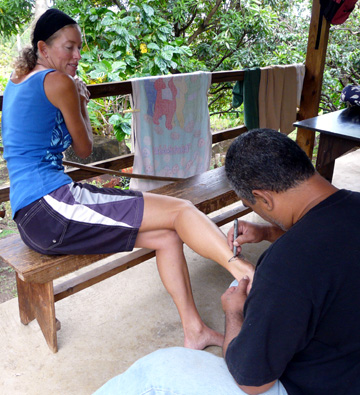
|
We bought a few souvenirs, but the best ones are the tattoos we got at Vaihatu from tattoo artist Felix Fii (nickname "Fati" pronounced "Fawtee"). Hiding in the tattoos are tikis, the faces of deified ancestors that provide protection, but we don't know which ancestors--hopefully not ones with a warped sense of humor. Since we were low on Polynesian francs, we paid partly in vodka and spare lines. Yes, getting a tattoo hurts, but not as much as in the past, when they were made by striking a bone comb with a wood hammer! It mostly felt like an annoying electric shock, but at times was closer to being carved with a steak knife. Paul toughed it out for five hours with only the goat skin hanging from the porch ceiling to distract him (Fati uses them to make drums.) |
||
|
|
|||
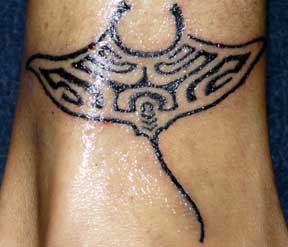
A graceful ray glides up Erin's ankle |
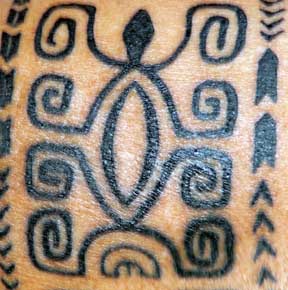
Paul has a Marquesan armband with turtle and tuna encircling his arm. In Marquesan beliefs, the turtle acts as a guide to the next world. The tuna are included in hopes that we'll catch more of them. |
||
|
|
|||
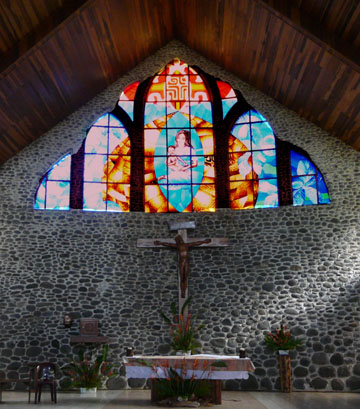
|
|
||
|
Since we were here so late in the season, we had many normally crowded anchorages to ourselves. In June, this anchorage at Vaitahu holds 20 to 30 cruising boats, predominantly American. |
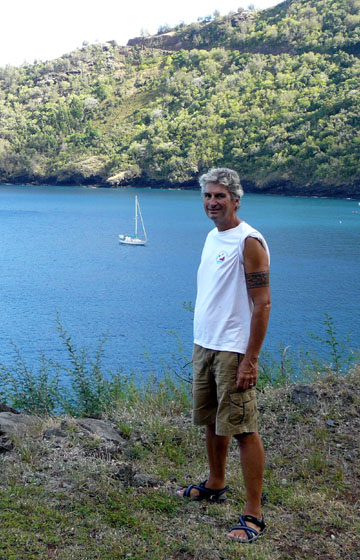
|

Ua Pou Island
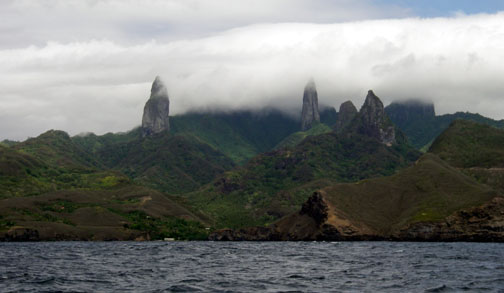
|
|
|
Ua Pou and its cloud-enshrouded phallic spires
Even though two toothless guys came by in an outrigger to invite us to share their freshly-caught fish, we couldn't stay in Hanamenu Bay at Hiva Oa due to the very rough conditions. We left for Hakahau on Ua Pou, where we anchored in conditions almost as bad. In the morning two days later, sirens wailed and gendarmes in trucks blasted announcements from megaphones, "Tsunami!" Evacuate!" Told we had maybe five minutes before the arrival of the tidal wave, we raised our anchors and got out to open sea as fast as we could. The tsunami that so devastated parts of Samoa was at most ankle-high by the time it reached the Marquesas, but we didn't know that until hours later. |
|
|
|
|
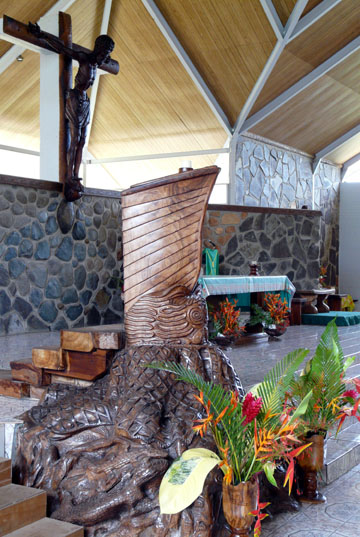
|
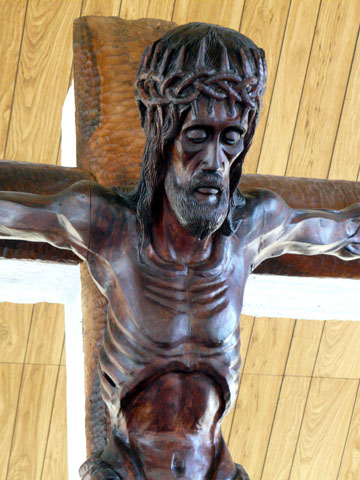
|
|
This impressive carved crucifix and pulpit are in the church at Hakahau. The pulpit is the bow of a boat negotiating a sea full of fish, turtles, and . . . lizards. |

Nuku Hiva Island
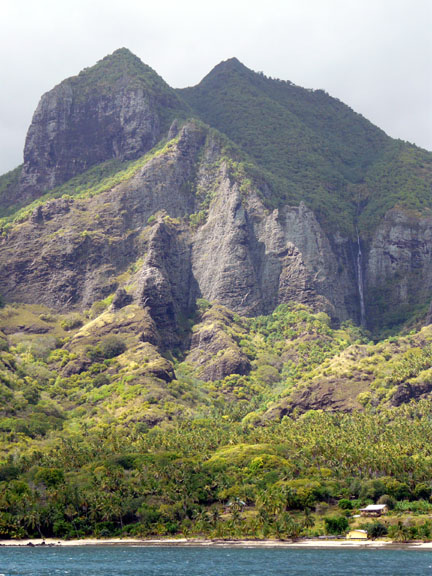
|
At Anaho Bay on Nuku Hiva, we found our first calm Marquesan anchorage. The surroundings are as gorgeous as the water is flat. There are octopus hiding in holes on the nearby reef, with its underwater canyons of coral in various shapes and colors. The murky water makes for poor visibility, but that means the turtles and rays don't see you coming. |
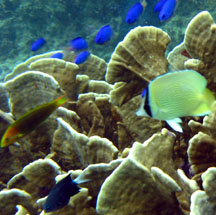
|
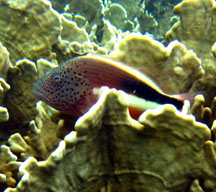
|
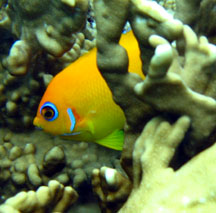
|
| Despite less than perfect visibility, the snorkeling here is excellent. Often, a 4-foot manta ray or a turtle cruised by. Coral in the shape of a curved maze forms individual apartments for hundreds of territorial reef fish and the occasional crab. |
| While hiking with John and Linda on Nakia, we met Rose Marie, who treated us to fresh watermelon from her garden. |
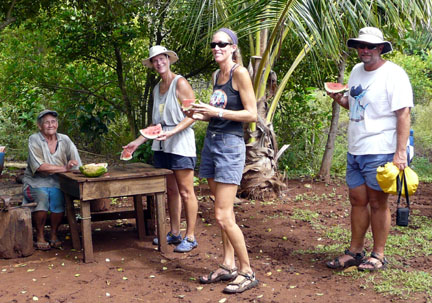
|

|
| The beautiful and unpopulated east coast of Nuku Hiva |
| Paul's last mango in paradise |
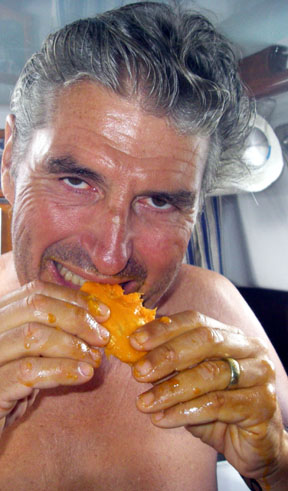
|
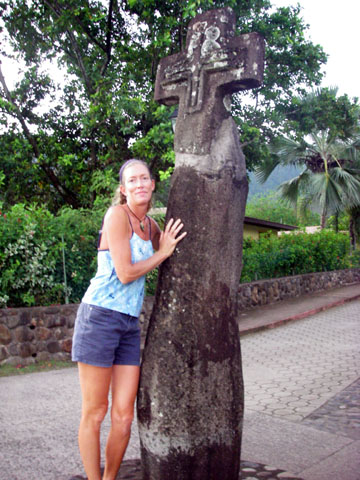
|
Missionaries replaced the top of this virile monument with a cross. |